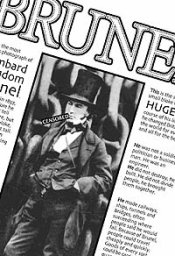Neat question, great image.
Looking into my Kingslake, it seems Ross and Dallmeyer are out of the running: prior to 1859 there were no adequate lenses from Ross. After the elder Ross died, young Ross and Dallmeyer parted ways, and each manufactured their first great objectives. But all came after Howlett had died.
A meniscus lens with a stop, or a Grubb aplanat, might be possible lenses. They were both slow, according to Kingslake. But the Petzval or Voigtlander portrait lenses were fast and good, and common. Voigtlander made a variety of focal lengths, and Petzval was nearly out of business at this time.
My own playful shots with a short Voigtlander show that stopping down improves the corners, but speed was a real issue at the time, and the use of a longish lens reduces the amount of fuzzy corners in the final image. If Howlett was shooting outside, and had to haul around all the wetplate stuff anyhow, carrying a big lens wouldn't have broken his back if it wasn't already broken.
If we can assume the image wasn't an enlargement, which was DONE, but not common ( according to Towler, in The Silver Sunbeam ) the plate of Brunel was about 300cm x 250cm; a little larger than the image as presented. The image looks like it was made with a longish lens, a lot like an 8x10 image from a 360mm - 400mm.
I'd guess, then, a 300 x 250 plate, with a 450 mm Voigtlander made Portrait lens.
As for the type of camera, I'd guess something like Frith's or Fenton's. Maybe the BJP archives would have a clue. Something this large, I'd bet it was made to Howlett's design by a cabinetmaker.
It has to be speculation, unless there are some primary sources. He left some 14" prints, a lot of smaller ones ... did he use a couple cameras, or several ? There are many cropped versions of the Brunel that date from the time... too many questions.
Are you planning an elaborate dress-up party ?
Don
"This suspense is terrible. I hope it will last."














